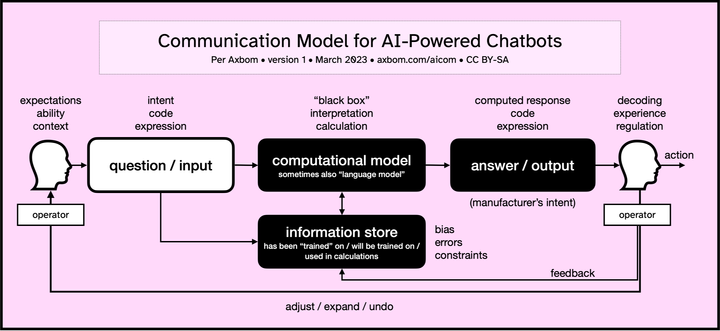Tech addiction: why it matters
The idea of addiction to new technology often leads to polarized debates. In this post I bring attention to both perspectives and ask the question: does it matter how many people are being hurt?

Ever more often I see people arguing about whether or not tech addiction is a real problem. On one side of the aisle, tech addiction is just alarmism or a disinformation campaign. At the other end, the media loves pushing big headlines on how our devices have us hooked to various online services. I believe it would be helpful to take a step back and ask ourselves what we are really talking about when this topic comes up: human beings experiencing distress.
Getting real about the word addiction — a word that itself carries many different connotations for different people — it’s really about adverse effects of a specific behavior, and understanding the severity of those effects.
Arguments are near futile when we aren’t in agreement about the words we are talking about. To talk about tech addiction we really need to understand what it is that has people worried and upset.
Psychology Today defines addiction like this:
A person with an addiction uses a substance, or engages in a behavior, for which the rewarding effects provide a compelling incentive to repeat the activity, despite detrimental consequences. Addiction may involve the use of substances such as alcohol, inhalants, opioids, cocaine, and nicotine, or behaviors such as gambling.
Addiction is often linked to substance misuse. This makes the word even more loaded, as some of these behaviors are not only harmful to well-being and directly injurious to physical health, but also illegal. For some people this conjures images of outcasts with dirty syringes or spoons. Of course, we also know that respectable community members with seemingly well-adjusted lives can be addicted to substance abuse, both illegal ones and legal ones such as alcohol and tobacco.
The main reason some substances are illegal are because their addictive properties, which vary from drug to drug, can cause significant negative impact to an individual and to society. That is to say, it is deemed more likely for more people to become addicted to certain drugs than others.
Gaming disorder and proportions
In June of 2018 the World Health Organization added Gaming disorder to 11th Revision of the International Classification of Diseases (ICD-11). As WHO describes it:
A decision on inclusion of gaming disorder in ICD-11 is based on reviews of available evidence and reflects a consensus of experts from different disciplines and geographical regions that were involved in the process of technical consultations undertaken by WHO in the process of ICD-11 development.
Essentially, the occurrence of people who are addicted to gaming is considered significant enough for the disorder to be included as an official disease, but WHO also points out that this “affects only a small proportion of people who engage in digital- or video-gaming activities”.
What we need to understand is that addiction that affects only a small proportion of those engaging in the activity, is still addiction. Small proportions are to be expected. And there is no certain way to predict who will be affected, as any combination of biological, psychological and environmental factors can contribute.
The symptoms and nuances of addiction
Arguing over whether or not tech addiction is a thing unfortunately misses the point. The phrase “tech addiction” implies that it is a general problem that affects the population as a a whole, but addiction rarely is something that hits the majority. It almost always affects only a small number of people in the larger population. The thing is, even when it affects only a small number of people it can be a huge cost for those individuals, and – when enough people are affected – also impact society as a whole. This is the nature of addictions.
As so often in polarized arguments: both things are true at the same time. I can agree that there is no tech addiction in the sense that everyone who uses specific tech becomes addicted to it. But it’s also true that there are a small proportion of people who do become addicted. Gaming is tech. Gaming disorder is real. People who build digital sites, apps and platforms take pride in employing what is know as gamification techniques to get people hooked to all types of tools.
What we should be focusing on is helping people understand if their behavior and relationships with tech devices and services has a tendency towards addiction. If the word offends, we don’t even have to call it addiction to identify effects that, if allowed to continue for long periods of time, can have a negative impact on our well-being. We can focus on the effects and characteristic traits of addictive behavior.
Psychology Today lists eleven symptoms that can help determine addiction. A clinical diagnosis of an addiction is based on the presence of at least two of these symptoms. Before you jump to conclusions, please note that a diagnosis is based on this, it does not follow that you are necessarily addicted because you self-diagnose yourself as a subject of several symptoms. A clinician has the final word. Having said that, your personal evaluation of these symptoms can of course begin to create some self-awareness about your relationship to digital services:
- The substance or activity is used in larger amounts or for a longer period of time than was intended.
- There is a desire to cut down on use, or unsuccessful efforts to do so.
- Pursuit of the substance or activity, or recovery from its use, consumes a significant amount of time.
- There is a craving or strong desire to use the substance or engage in the activity.
- Use of the substance or activity disrupts obligations at work, school, or home.
- Use of the substance or activity continues despite the social or interpersonal problems it causes.
- Participation in important social, work, or recreational activities drops or stops.
- Use occurs in situations where it is physically risky.
- Use continues despite knowing it is causing or exacerbating physical or psychological problems.
- Tolerance occurs, indicated either by need for markedly increased amounts of the substance to achieve the desired effect or markedly diminished effect of the same amount of substance.
- Withdrawal occurs, manifest either in the presence of physiological withdrawal symptoms or the taking of a related substance to block them.
A greater number of confirmed symptoms implies a more severe addiction. I’d also factor in that some people can exhibit symptoms over shorter periods of time, and it would follow that the longer these symptoms persist the more severe an addiction is.

An addiction can be considered mild, moderate or severe, but this nuance is often missing from debates. Just the word addiction seems for many people always to be implying the more severe forms. But a mild addiction is of course also an addiction. And a mild addiction can get worse, or it can get better. Our ability to take even a mild addiction seriously will be an indicator of our focus on human well-being.
A minority can be a big deal
As you see, just using the word addiction in debates fails to nuance the problem space. We would sometimes be better off avoiding the word addiction and instead bringing the consideration of severity into the conversation. We could talk about human costs, vulnerability and power of voice.
Tech use, and social media use, has exploded across the world. We’d all do well to be curious about the effects of that. Let’s talk about who is better off and who is worse off. Even if only a small proportion of people are addicted to tech, that’s likely a huge number of people. Who are they and how do we help them? Is there regulation that could help us minimise costs to well-being and costs to society?
Let’s acknowledge that a lot of people, likely most people, are managing alright with tech advancements. Without a doubt, many tech innovations increase accessibility to content, knowledge and conversations for a great many people. But let’s also stop dismissing worries about tech addiction as merely alarmism. Because here’s the thing: people’s voices matter even when they are not part of the majority. People’s well-being matter even when they are a small percent of the people you affect.
We can always do better at listening to those who take the hardest hits. Whether addiction is mild, moderate or severe, and whether it affects a small or large proportion of people – working with the intent to promote all human well-being is always time well spent.




Comment